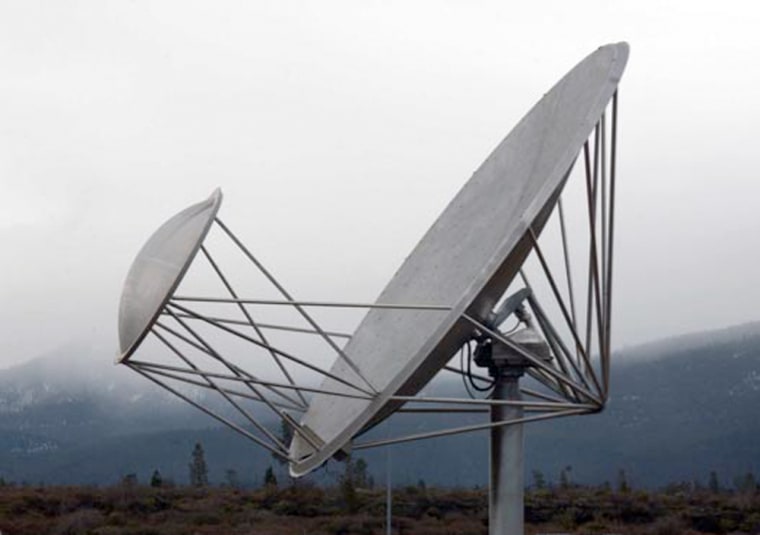Following a recent demonstration of a 10-dish element of the Allen Telescope Array, the U.S. Navy has signed off on a $1.5 million agreement to use the array along with another 10-dish installation to be developed in the near future.
The Allen Telescope Array, or ATA, is a general-purpose radio telescope designed to provide new measurements and insights into the density of the very early universe, the formation of stars as well as other applications. The observatory is located the Hat Creek Radio Observatory in the mountains northeast of San Francisco. Investor and philanthropist Paul G. Allen has committed $13.5 million to the construction of the first and second phases of the array.
When complete, the ATA will consist of 350 20-foot (6.1-meter) dishes. Twenty dishes are currently online at the observatory with a 42-dish array total to be completed near the end of the year. Though the project is slightly behind schedule due to the recent heavy northern California winter and the usual challenges of engineering a radical new technology, one of the project’s leaders is particularly pleased by recent progress.
“Things are now moving fairly quickly,” said Jack Welch of the Radio Astronomy Lab at the University of California at Berkeley. Welch, who in great part conceived the ATA project and is the observatory's former director, added that the challenge of building a completely new type of radio telescope array has been further energized by the U.S. Naval Observatory's involvement.
Representatives of the Naval Observatory visited the array in mid-July when the instruments were undergoing initial testing and observations. They were interested in the array's ability to monitor the ever-increasing amount of space debris found in Earth orbit.
“They are interested in using the dishes for possible applications for what is known as ‘space situational awareness’ that is an important arena for the Department of Defense,” Welch told Space.com.
According to Welch, the ATA is the ideal technology to help get a handle on this because of the nation’s investment in constellations of satellites for communications, navigation, weather monitoring and of course defense — not to mention the dangers posed to the international space station, the space shuttle and future human spaceflight.
One of the ATA's strengths is its unique ability to filter through the signatures of orbiting objects while searching the skies for extraterrestrial signals and astrophysical phenomena.
“For example, if a laptop computer was started up in geosynchronous orbit, the ATA could detect it,” Welch said. “It can also do radar studies to locate and detect echoes from a wide variety of things such as orbiting satellites.”
While the Navy’s interest in the project and its investment give the project a much-needed boost, astronomy and SETI research remain the telescope’s primary purpose. “Our overall goal is not to do this, but rather as a demonstration of technology that the Department of Defense can take and use for its own scientific research purposes,” Welch said.
The U.S. Navy has a long history of doing scientific research dating back to the establishment of the Naval Observatory in Washington, where astronomer Asaph Hall discovered Phobos and Deimos, the moons of Mars, in 1877.
Current projects include a wide variety of research projects in optical and radio astronomy. When asked about the Navy’s involvement in the ATA project, the Naval Observatory's scientific director, Ken Johnston, said he was pleased to be a part of the ATA’s work.
“The United States Navy is always interested in basic research that may lead to technology applications for present and future DoD needs,” Johnston said.
